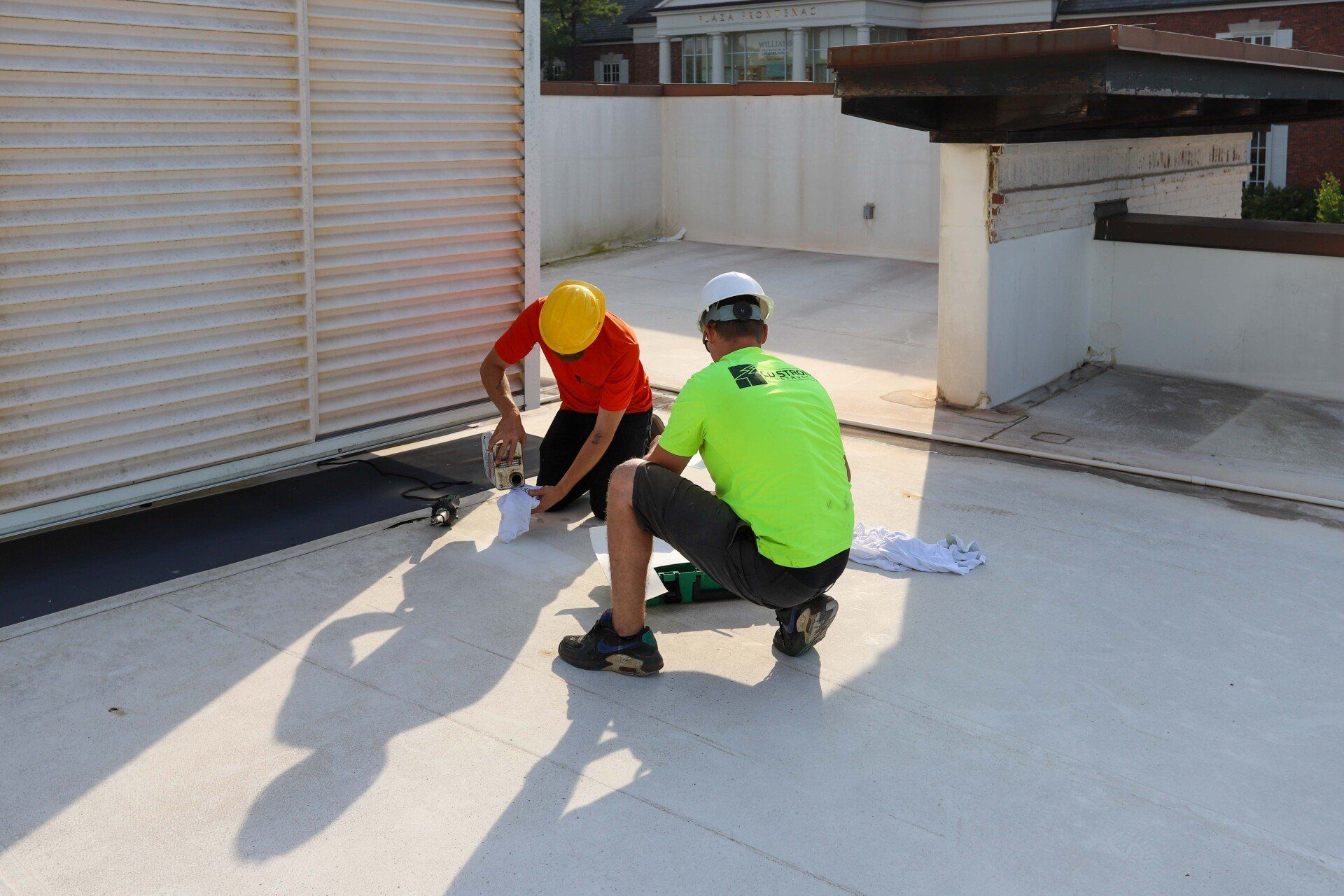When deciding on a roofing style for your property, one of the most critical choices is whether to go with a flat or a pitched roof.
Each option has its advantages and drawbacks, and the right choice for your unique situation depends on factors like climate, budget, and the intended use of the building.
Explore some pros and cons of flat and pitched roofs to help you decide which style best suits your project and your building's overall needs.
Flat Roofs
Pros of Flat Roofs
Cost-Effective
Due to their simpler design, flat roofs are typically more affordable to install than pitched roofs. They require fewer materials and less labor, making them an attractive option for budget-conscious homeowners and businesses.
Easier Maintenance
The flat surface of these roofs makes it easier to access and perform maintenance tasks. Whether cleaning debris, repairing leaks, or installing new features like solar panels, flat roofs provide a convenient working surface.
Modern Aesthetic
Flat roofs are often associated with modern, minimalist architecture. Their sleek and clean lines create a contemporary look popular in urban and industrial settings.
Usable Space
A flat roof can double as functional space. Many property owners use flat roofs as rooftop gardens, patios, or even spaces for HVAC systems (most common with commercial buildings). This additional usability can be especially valuable in urban areas with limited outdoor space.
Efficient Use of Space
Flat roofs allow for better interior space utilization since no sloping cuts into the upper levels of the building; this makes them ideal for maximizing usable square footage in homes or commercial buildings.
Cons of Flat Roofs
Drainage Challenges
Flat roofs don't shed water as effectively as pitched roofs. Without proper drainage systems, water can pool on the surface, leading to leaks and structural damage over time.
Shorter Lifespan
Flat roofs generally have a shorter lifespan compared to pitched roofs. Their materials, usually modified bitumen or rubber membranes, may degrade faster under harsh weather conditions.
Limited Material Options
Flat roofs don't offer the same material options as pitched roofs. While this simplifies the decision-making process, it can also limit the ability to customize your roof's appearance.
Thermal Performance
Flat roofs can be less energy-efficient in certain climates. They tend to absorb and retain heat, making them less ideal for areas with hot temperatures unless adequately insulated.

Pitched Roofs
Pros of Pitched Roofs
Better Drainage
The sloped design of pitched roofs ensures excellent water and snow runoff, reducing the risk of leaks and structural issues. This design feature makes them ideal for regions with heavy rainfall or snowfall.
Durability and Longevity
Pitched roofs are typically more durable and longer-lasting than flat roofs. Materials like asphalt shingles, tiles, or metal can withstand various weather conditions and have a lifespan of 20 to 50 years or more.
Energy Efficiency
Pitched roofs provide better insulation and ventilation options. The attic space created by the slope can serve as a buffer zone that helps regulate indoor temperatures, improving energy efficiency.
Versatile Material Options
With pitched roofs, you can choose from a wide range of materials, including asphalt shingles, clay tiles, slate, and metal, allowing for greater customization to match your aesthetic preferences and budget.
Classic and Timeless Look
Pitched roofs have a traditional and timeless appeal that works well with many architectural styles. They're often seen as more visually pleasing and can enhance the curb appeal of your property.
Cons of Pitched Roofs
Higher Cost
The complexity of pitched roofs makes them more expensive to install than flat roofs. They require more materials, labor, and time to complete, which can significantly increase the initial investment.
Difficult Maintenance
Maintaining a pitched roof is more challenging due to its slope. Tasks like cleaning gutters, inspecting shingles, or fixing damage require specialized equipment and professionals, which adds to long-term costs.
Less Usable Space
The sloped design of pitched roofs can limit usable space inside the building. Depending on the floor plan and layout, this peak may reduce the functionality of upper floors or attic areas.
Wind Resistance
While pitched roofs perform well under rain and snow, their larger surface area can make them more susceptible to wind damage, particularly in areas prone to high winds or hurricanes.
Longer Installation Times
Due to their complexity, pitched roofs take longer to construct. This extended timeline can delay project completion, which may be a significant concern for time-sensitive builds.

Work With CD Strong Construction
When deciding between a flat and pitched roof, consider your location, budget, and long-term building plans.
Flat roofs are often better suited for modern designs, commercial properties, or regions with mild climates.
Pitched roofs, however, are ideal for traditional homes, areas with heavy precipitation, and those seeking longevity and energy efficiency.
At CD Strong Construction, we can help you determine which roof works best for you. When you work with our team, we look out for you to ensure you get a quality roofing job that will last for years.
Are you searching for the best roof repair & roof installers in the Midwest?
CD Strong your trusted roofing contractor

CD Strong Construction – License #104015053 – Your Trusted Roofing Contractor


